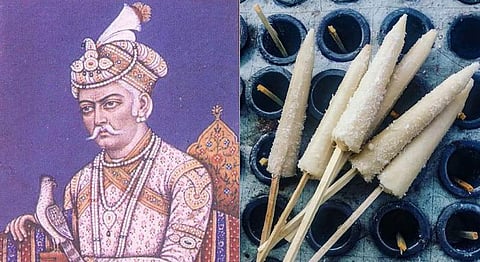
- HOMEGROWN WORLD
- #HGCREATORS
- #HGEXPLORE
- #HGVOICES
- #HGSHOP
- CAREERS
- ABOUT US
- CONTACT US

Back in my pre-teen years, I lived in Delhi in an area named Dwarka, and like many other residents of the city, I too believed in the supremacy of Delhi food. My spice tolerance was up to the mark, and my immunity, maybe not so much, but I took risks anyway.
I did not have much to complain about except the scorching heat, and the little to no ways to beat it in the outdoors. Yes, I know – the countless ice cream stalls were always at the ready to make a sale, but I would always crave one of those local kulfi sticks, which the bhaiyya would defrost and unmould right in front of you.
Years later, I still look out for similar kulfis, but my present location of Bengaluru does not seem to offer it.
It does get me thinking, though – where did the kulfi come from? Did we simply ‘Indianise’ ice cream, or is there more to the story? Under the assumption that your curiosity is as strong as mine, let me take you through the origins and journey of the popular chilled dessert.
The Mughal rule in India lasted from 1426 to 1857. With India’s vast and rich availability of spices such as cardamom, cinnamon, saffron, and more, the food at the time was spiced, but not spicy - it was mild and rich at the same time. Another aspect of the Mughals we must keep in mind is that the language used by them was Persian, and several of their words have trickled into our everyday language, too. These include zaroor, safed, khoob, and rang, among others.
Kilfi was born in the 16th Century, around the middle years of the Mughal rule, under the Akbar administration. At the time, evaporated and condensed milk were popular ingredients in Indian desserts, but rarely was it frozen. The Mughals decided to pack this with flavour and used saffron and pistachios to do so. Once mixed, they packed it into metal cones (similar to the kind used even today) and left it to freeze. Of course, with no refrigeration or conventional freezing methods available, they used a slurry of ice and salt to freeze the kulfi. The Ain-i-Akbari, a detailed document written in Persian by Abu’l Fazl also describes the use of saltpetre (potassium nitrate) to chill water and turn it into ice.
The name kulfi is derived from the Persian word qulfi, meaning ‘covered cup’, perhaps referencing it to the cones it is formed in. Now, kulfi is eaten out of matkas, in bowls, and even on leaves. The range of flavours, too, has expanded – mango, pista-badaam, malai (cream), chocolate, and rose are simply the tip of the iceberg.
The local vendors of kulfi, the real kulfi are on a decline, owing to the growing popularity of processed and packaged kulfi. But I cannot help but remember the unmissable smell of milk around the vendor’s bicycle, the particular shade of grey of the cones, and the absolute roughness of the wooden sticks to which the kulfi hung on for dear life in the summer heat.
As much as I enjoy the readily available nature of kulfi now, the Indian ice cream’s legend makes me miss the OG just that tad bit more.
If you enjoyed reading this, we suggest you also read:
